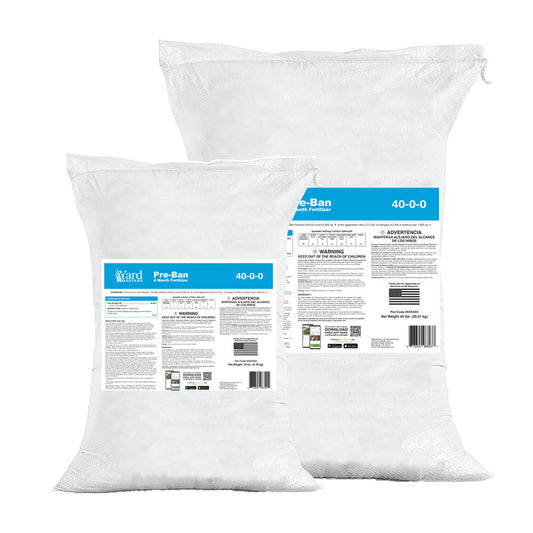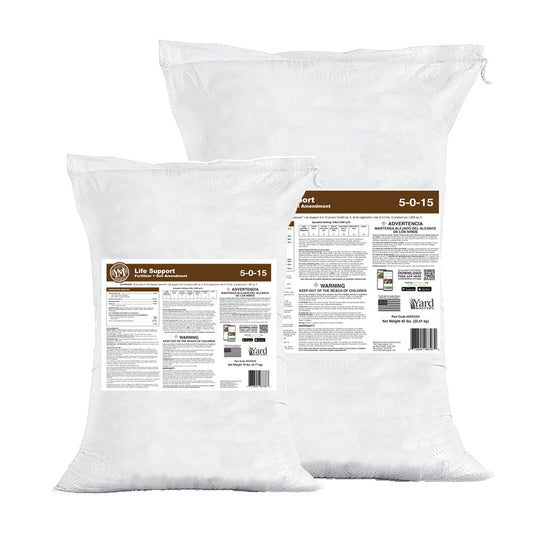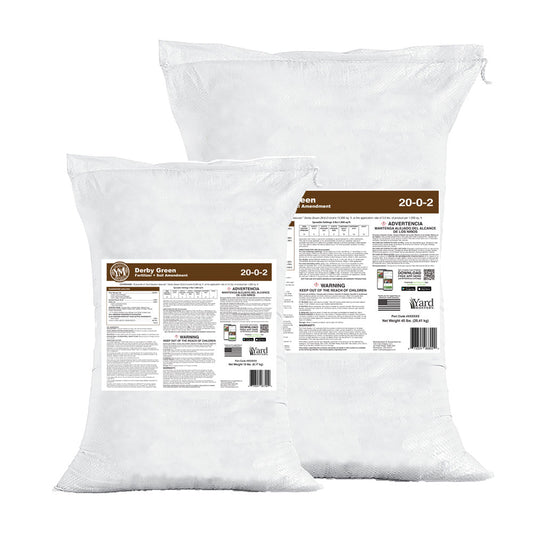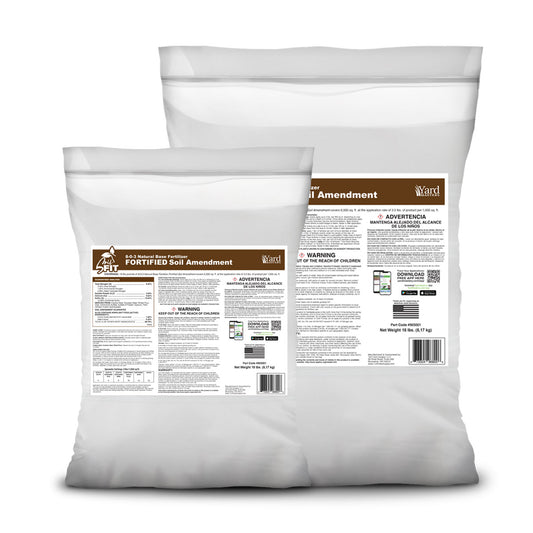I was working with a customer this week who had questions about her soil test results. Hers came back REALLY good. So good that our algorithm didn't provide any recommendations. That is something we need to improve but in the meantime, if provided a teaching moment that I thought many of you could benefit from.
This comes from Lisa in Missouri and this is her soil test:
I did a soil kit a month ago and no one is able to tell me what to put on my lawn. Can you please tell me what needs to be applied?

My response - which you guys will see, sticks to my reputation of being VERY overly detailed...
Hey Lisa - Good to hear from you.
The good news is that your soil test looks really good. You are in good shape for almost all your nutrients so all you have to do is maintain.
Always remember that this test shows you what is currently available in your soil right now. Think of it like a plate of food sitting there in the soil for the turf.
The turf is going to consume this food so if you were to stop and do nothing, over time these nutrients would become depleted and the lawn would starve.
So most folks, when they get back their results, they are low in many/most nutrients because that is the state their lawn has been in - neglect. In those cases I have to recommend ferts that will correct these deficiencies for them, and then once that happens, they can go on a maintenance type schedule.
Seems like in your case though, you are in good shape! Your job is just to keep the sufficiently stocked with "all of the things" your lawns needs.
Those things are what is listed on the soil test.
Macronutrients - "macro" because the lawn consumes these in great quantities.
N-P-K and S, Ca, Mg and NA
Micronutrients - "micro" or "minor" because the lawn consumes these in smaller quantities.
Make no mistake though, both macros and micros are equally as important, just the quantities needed differ.
One other thing to keep in mind: Nitrogen drives the bus. That is the "N" is the first of the macronutrients. It will drive green color for sure, but more importantly, it drives growth within the plant and that growth helps grass plants take in many of the other nutrients to support that growth. So no matter what, in almost every application you make going forward, make sure the fertilizer has nitrogen included. Nitrogen is the first number in the 3 numbers on the bag of fertilizer.
Here are 3 important blog posts to read that will add clarity to this email if you are looking for more detailed training:
Last thing is the pH. Yours is in the perfect range so you are all good there too! If this were low or high it could "lock up" some of the nutrients in the soil, making them unavailable to the plant, but in your case, once again, no remediation needed. If you are still interested in learning more about it anyway, here is some further reading:
General Purpose Fertilizer
So for you, I would recommend you use what I call "general purpose fertilizers" in low doses every 4-5 weeks.
I'm going to recommend liquids for you in a "spoon feed" type strategy, and the
18-0-1 Greene Punch is the perfect choice. The application rate suggested is 16oz/1000 which is going to give you a nice "spoon feeding" of basic elements, Nitrogen, Potassium and some sulfur and iron. You are in good ranges for all of these already, but remember, the turf is going to consume elements over time and this liquid "spoon feeding" approach will not over-tax the turf by pushing more than it needs. Think of this like someone who is in good shape eating several small meals a day rather than only 3 big ones.
With your soil analysis, your best approach is that, to give it several "spoon feedings" over the season rather than just a general blast of "4 steps a year" like most people do.
This product should be applied with a pump sprayer.
Also in that 18-0-1 Greene Punch is some humic acid (5%) which is a chelator and will help optimize the nutrients that are already in the soil and some cold water kelp (1%) to stimulate rooting. We refer to humic acid and sea kelp as "Bio-Stimulants" and they are included in this product along with the nutrients.
MicroNutrients Fertilizer
Sticking with the liquids, I would next recommend you apply
0-0-2 MicroGreene every 4-5 weeks as well. You could apply this on the same day as you apply the Greene Punch, or you could do it a week later, 2 weeks later, however you like, just get on a schedule of applying MicroGreene every 4-5 weeks. Do not mix them together - too thick of a mix. Do these apps separately. Here you just need 8oz/1000 for your application rate.

This is going to give you some additional potassium, magnesium, copper, sulfur, manganese, zinc and iron. On your test, one of the only 2 elements you were low in is zinc so this will have you covered. No need to try and fix that zinc deficiency with a specialized "heavy dose" or anything like that - just know that using this product every 4-5 weeks will be taking you in the right direction with zinc while maintaining the others as they need to be. This one also contains humic acid and coldwater kelp bio-stimulants. You could apply this product via pump sprayer or
hose end sprayer.
I have linked you to the 5 gallon offerings - I am not sure how big your lawn is - you probably won't need that much. You can easily build a nice box of 2.5 gallons of each here:
Here is what coverage you will get:
18-0-1 Greene Punch 2.5 gallons = 320 oz
App Rate: 16oz/1000
Jug covers: 20,000 sq ft
Cost: $65.50
Cost per 1,000 sq ft: $3.27
Cost per application if you had a 5,000 sq ft lawn: $16.35
0-0-2 MicroGreene 2.5 gallons = 320 oz
App Rate: 8oz/1000
Jug covers: 40,000 sq ft
Cost: $78.00
Cost per 1,000 sq ft: $1.95
Cost per application if you had a 5,000 sq ft lawn: $9.75
I'm just assuming a 5,000 sq ft lawn here because it's easy - you can do the math if your lawn is bigger or smaller, but essentially, if you sprayed each product monthly as I recommended, your cost per application would be $26.10. Basically, $26 per month and this would also include bio-stimulants so you really wouldn't need to buy these extra either. I broke the math down like this because people tend to get sticker shock until they break down the yearly cost like this.
How To Get Boron
To get some boron, this is an easy one and something you only really have to do 1 or 2x per year. I'm not usually a fan of taking store bought products and using them in the lawn, but this one is tried and true and one of my little secrets I like to share. If you go to any grocery store detergent aisle, pick up some
20-Mule-Team Borax. My Grandma, mom and wife have used Borax as a laundry "enhancer" for years and these days it is enjoying a nice boost in sales from the "I want to use safe, non-toxic cleaners" crowd because it's very natural. For us, it's a great source of boron for our lawns.
Mix 1 tablespoon of Borax into 1 gallon of water, stir it up well and spray this across 1,000 sq ft of lawn space. This will be enough boron for a good 6 months. Repeat this one or two times per year and you are all set. I have found that dissolving the Borax in warm water first helps make it easier to spray out with less residual grit.
After applying these (all of them) be sure to water them in with at least 1/4" of water or rainfall.
Since I have recommended liquids here, it will be a good idea to review pump sprayer training through these blog posts and videos:
Unlisted/Private video training:
I hope that helps to clarify some for you and set you on the right path.









